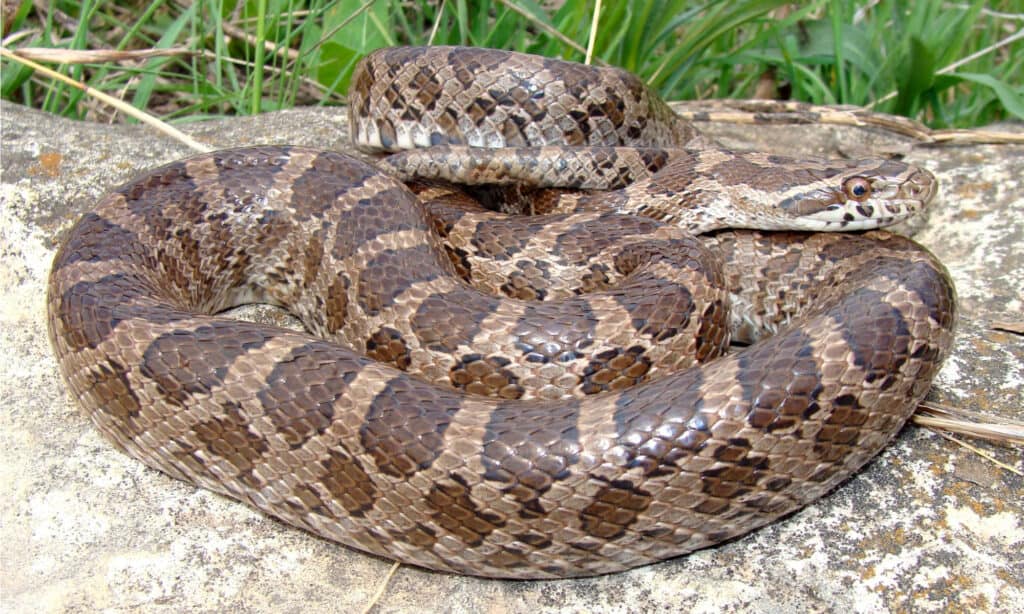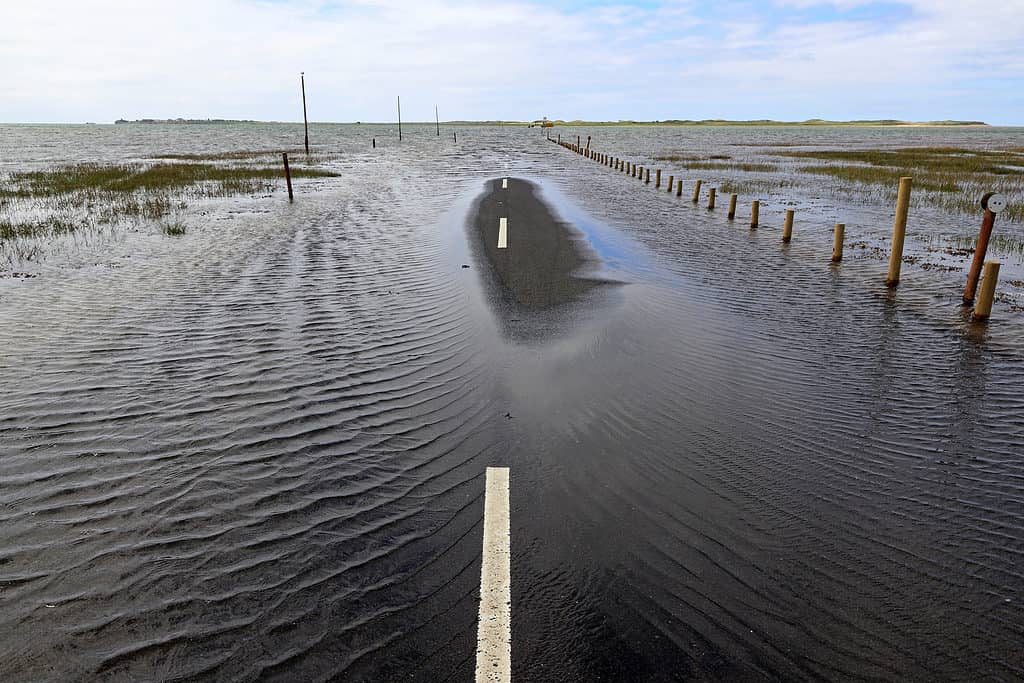Kansas is a leading producer of many agricultural products in the United States. Controlling the river waters in the state is essential to good farming, and dams are one of the leading ways to accomplish that task. Some especially high and long dams are required to contain large water reservoirs. Today, we’re going to look at the largest dam in Kansas and show how big it is, where it is located, and more!
What is the Largest Dam in Kansas?

The largest dam in Kansas is the Cedar Bluff Dam.
©BUI LE MANH HUNG/Shutterstock.com
The largest dam in Kansas is the Cedar Bluff Dam, a massive earthfill embankment dam that measures 202 feet tall and measures 12,560 feet long. This type of dam is created with an impervious core and then layers of soil and rock capable of stopping the flow of water in an area.
The Cedar Bluff Dam impounds the Smoky Hill River, creating the Cedar Bluff Reservoir. The dam is in Trego County, a western county within the state.
The U.S. Bureau of Reclamation built the dam to create a water source that would provide water to the nearby communities while also saving water for irrigation. The massive reservoir also functions to help with controlling floods in the region.
The Cedar Bluff Reservoir has a surface area of 6,869 acres, and it measures about 9 miles long. The Cedar Bluff State Park is located on the eastern end of the body of water. The reservoir is a popular place for people in the area to swim, play sports, go boating, and go fishing.

A History of the Cedar Bluff Dam
The Cedar Bluff Dam’s history goes back to the Dust Bowl, a period of extreme drought in the Great Plains between 1930 and 1940. The heat and drought combined with poor farming systems created a horrible situation where dust storms forced hundreds of thousands of people to flee the area.
Afterward, Kansas decided to focus on creating an irrigation system in the state, one that would allow for predictable conditions. The Bureau of Reclamation decided that the Smoky Hill River Basin was an ideal spot to create a dam with multiple purposes.
The Cedar Bluff Unit, the official designation for the dam, was allowed under the Flood Control Act of December 22, 1944.
The first day of construction on the dam took place on April 1, 1949. The dam was finished on September 29, 1951. The associated irrigation system to bring water to the Cedar Bluff Irrigation District brought water to all sections of the area by 1963.
The Cedar Bluff Dam’s other purpose was to lessen the impacts of devastating floods in the region. The dam can control 445,090 acre-feet of flood water, preventing major floods in the region. The irrigation efforts in the region ended in 1994.
Where is the Largest Dam in Kansas on a Map?
Cedar Bluff Dam is in Trego County in the western part of Kansas. The dam and reservoir lie between Interstate 70 and the Smoky Valley Scenic Byway on Kansas Highway 4. Kansas Highway 147 connects these two highways by running north and south between them and over the dam itself.
Although the dam is not located near any major cities, it is still a valuable structure in the region.
What Animals Live Near the Cedar Bluff Dam?

Great Plains Rat Snake coils up and shakes its tail in an effort to scare away threats.
©Matt Jeppson/Shutterstock.com
Many different animals live near this part of Kansas. Some of them occupy the state park near the dam and reservoir while others occupy the water. The animals that people see on land and in the air when they explore this part of the state include:
- Great plains rat snake
- Gopher snake
- Great-tailed grackle
- House wren
- Mule deer
- Eastern cottontail rabbit
- American mink
- Pronghorn
- Muskrat
- Swift fox
These animals can be found in various parts of the county near the reservoir and dam. However, the river and reservoir also have several different fish swimming in them. Some of the fish that people try to catch in these waters include:
- Largemouth bass
- White bass
- Smallmouth bass
- Channel catfish
- Crappie
- Walleye
- Spotted bass
Fishing is a very popular activity for people that visit the area. However, people also come for sightseeing, swimming, and other activities.
What Would Happen if the Cedar Bluff Dam Broke?

Flooding would be a serious problem if the dam broke.
©iStock.com/Astrid860
The Cedar Bluff Dam is a massive earthfill dam that measures over 2 miles long and 300 feet wide near the base. The dam is humongous, and it would take a significant failure to break through the dam or overwhelm the spillway and cause the dam to collapse near that side of the structure.
Flooding is the biggest problem if the dam were to break. The dam contains 50,000 acre-feet of water. Not all of it would spill out, but a large amount would certainly flood through the area, traveling down the Smoky Hill River, flooding farms and perhaps nearby towns like Schoenchen.
The area would also lose access to some of its drinking water. All in all, flooding would be a big problem, but it wouldn’t wipe out major cities or limit irrigation in the area. Also, the water from the reservoir stopped being used for irrigation decades ago.
The largest dam in Kansas is not the tallest in the country. However, it is a useful structure that helps reduce the threat of severe floods along the Smoky Hill River. The reservoir created by the dam is a large body of water, but it is mostly used for municipal waters and recreation rather than its original purpose of irrigation.
The photo featured at the top of this post is © iStock.com/Oleksii Liskonih
Thank you for reading! Have some feedback for us? Contact the AZ Animals editorial team.






